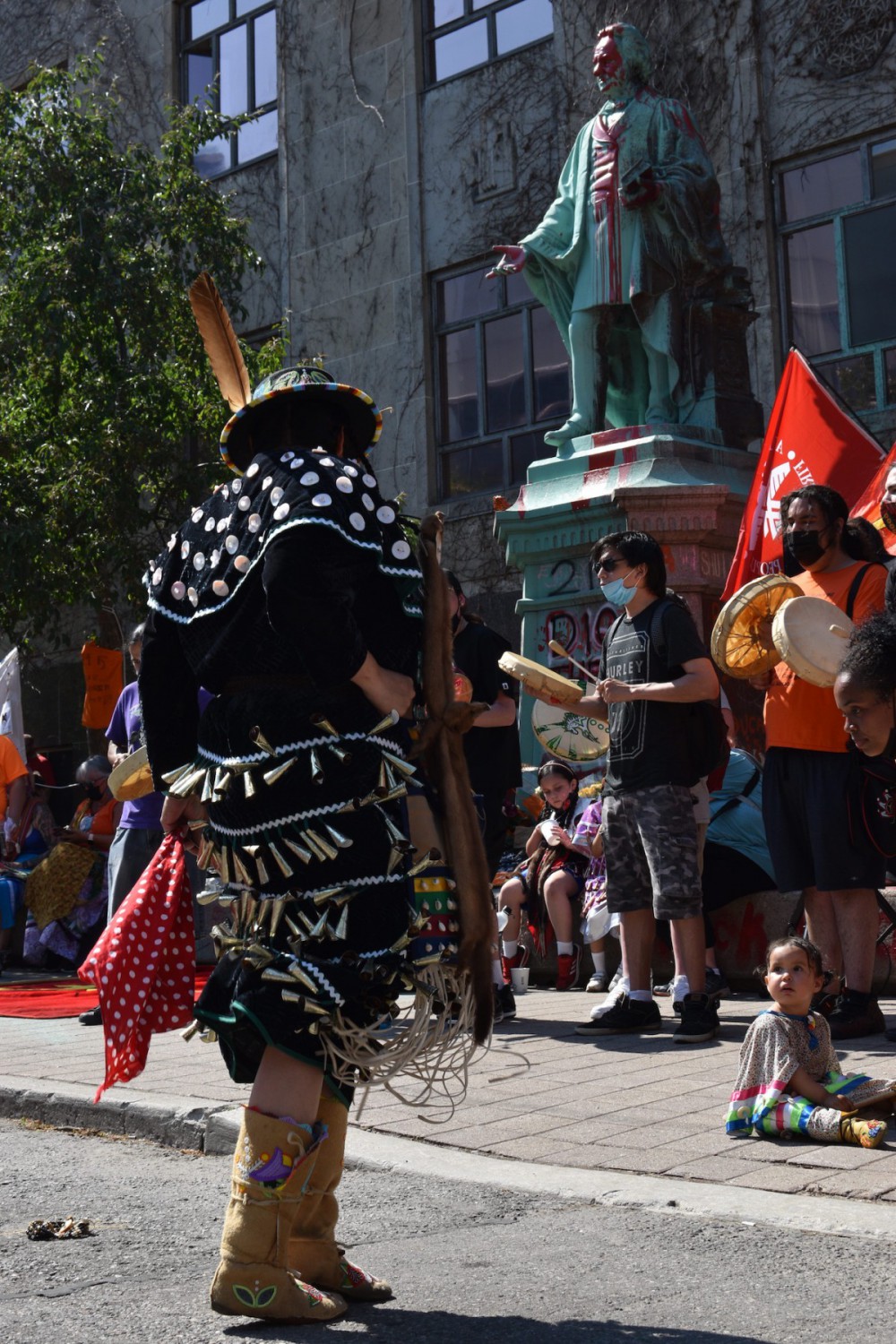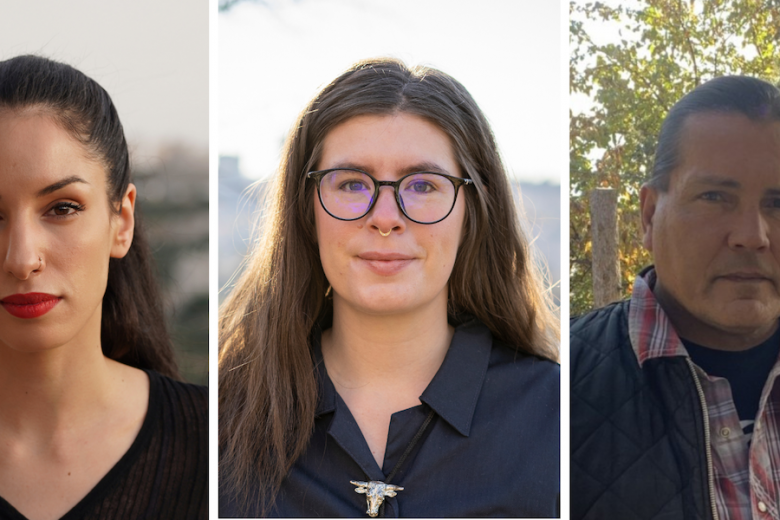
I took this photo in early June 2021 in Tkaronto, colonially known as Toronto, after the “Bring our children home” march. Canada had discovered 215 unmarked graves on the grounds of a previous residential school near Kamloops, B.C., but this wasn’t news to Indigenous people.
Shortly after the march, the jingle dancer started dancing in front of architect of residential schools Egerton Ryerson’s statue, defying his legacy. Moments later, community members toppled the statue, leading to a wave of genocidal statues being toppled across the country.
The photo captures a powerful moment between three generations: Indigenous women dancers, a toddler, and an Elder. A moment of Indigenous resilience and knowledge being passed on. I titled this work “The little ones are watching” because of this moment, but also because I believe that all the little ones who never made it home from residential schools are watching over us.
Nearly three years after this historical moment, I’m reflecting on what’s changed and what hasn’t in this country. This was supposed to be a moment of reckoning for the Canadian government, but instead the government is continuing its legacy of scooping up Indigenous kids into the foster-care system and failing to search for missing and murdered Indigenous women, girls, trans, and Two-Spirit people. As I protest for the liberation of Palestinian people these last few months, I’m thinking of the shared resilience and refusal of Indigenous people from occupied Palestine to so-called Canada.
*This photo was the winner of the photography category of our 13th annual Writing in the Margins contest, judged by Kevin Settee. We gratefully acknowledge the financial support of the Regina Public Interest Research Group (RPIRG) for this year’s contest.





_780_520_90_s_c1.jpg)
